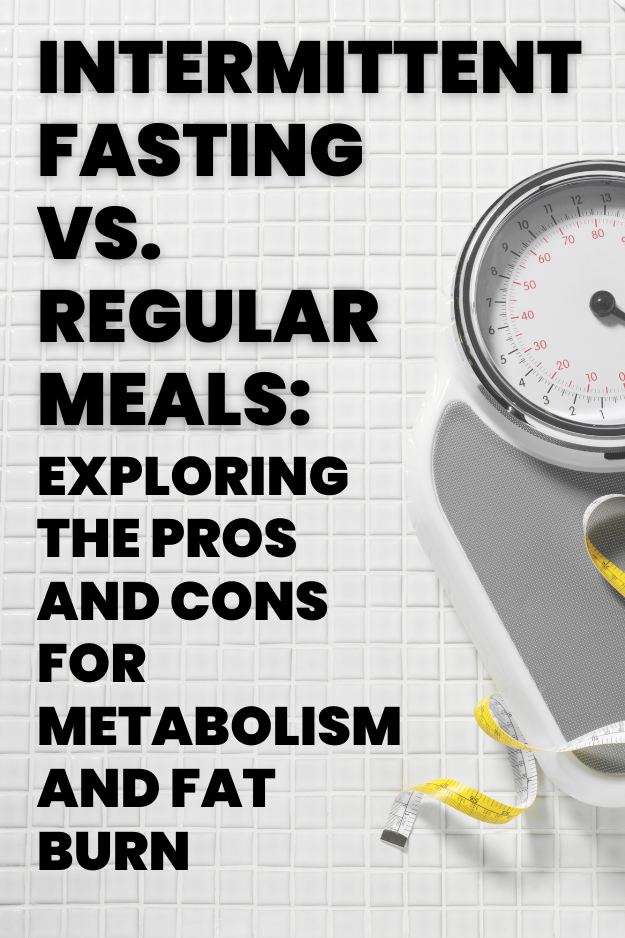Table of Contents
ToggleIntermittent fasting and the consumption of regular small meals offer unique ways to enhance metabolism and promote fat burn. Let’s delve into the functioning of these methods and explore their potential advantages and disadvantages. As an experienced health and wellness coach, I will be your trusted companion on this enlightening journey. Buckle up and prepare to unveil the mysteries behind intermittent fasting and consistent small meals!
Pros and Cons of Intermittent Fasting
Intermittent fasting has gained popularity for its potential benefits on metabolism and fat burn.
Let’s examine some of the pros and cons:
Pros of Intermittent Fasting:
- Improved Insulin Sensitivity: Intermittent fasting can enhance insulin sensitivity, which is crucial for maintaining healthy blood sugar levels and preventing insulin resistance.
- weight loss: By creating a calorie deficit and promoting fat oxidation, intermittent fasting can be an effective tool for weight loss. However, it’s important to maintain a balanced diet and avoid excessive calorie restriction.
- Simplified Meal Planning: With a restricted eating window, meal planning can become simpler, as you have fewer meals to prepare and fewer opportunities for mindless snacking.
Cons of Intermittent Fasting:
- Hunger and Energy Levels: Extended fasting periods may lead to feelings of hunger and decreased energy levels, especially in the initial stages. It’s essential to listen to your body and ensure adequate hydration and nourishment during the eating window.
- Potential Disruption to Social Life: If your eating window conflicts with social gatherings or family meals, it may impact your ability to fully engage in these activities. Planning and flexibility are key to maintaining a social life while practicing intermittent fasting.
Pros and Cons of Regular Small Meals
Consistently consuming small, balanced meals throughout the day also has its advantages and disadvantages. Let’s explore them:
Pros of Regular Small Meals:
- Enhanced Metabolic Rate: Eating small, frequent meals may help keep your metabolism active and prevent prolonged periods of hunger, potentially supporting a higher metabolic rate.
- Blood Sugar Regulation: Regular, balanced meals spaced throughout the day can help regulate blood sugar levels, preventing drastic spikes and crashes, which may support energy levels and overall well-being.
Cons of Regular Small Meals:
- Increased Frequency of Eating Occasions: Eating every few hours may require more frequent food preparation and planning. For some individuals, this can be inconvenient or challenging to maintain, especially with busy schedules.
- Risk of Overeating: While small meals can aid portion control, it’s essential to pay attention to portion sizes and overall calorie intake. Frequent eating occasions may increase the temptation to overeat or make less healthy choices.
Impact on Metabolism and Fat Burn
Understanding how intermittent fasting and regular small meals affect metabolism and fat burn can help you make an informed decision about which approach may be more suitable for you. Let’s delve into this topic:
Metabolism and Intermittent Fasting:
Intermittent fasting can influence metabolism through several mechanisms. During the fasting period, when insulin levels are low, the body switches to burning stored fat for energy. This process, known as lipolysis, can contribute to fat loss.
Additionally, intermittent fasting may promote increased levels of human growth hormone (HGH), which can aid in preserving muscle mass and stimulating fat breakdown.
Metabolism and Regular Small Meals:
The regular small meals approach focuses on maintaining a steady supply of nutrients throughout the day. This strategy can help prevent prolonged periods of fasting, which may keep the metabolism active and support energy expenditure.
Additionally, the thermic effect of food (TEF), which is the energy required to digest, absorb, and process food, can increase slightly with the consumption of frequent small meals. This can contribute to overall calorie expenditure.
Fat Burn and Intermittent Fasting:
Intermittent fasting can facilitate fat burn by creating a calorie deficit and promoting fat utilization during the fasting period. When insulin levels are low, the body’s access to stored fat increases, leading to fat oxidation.
However, it’s important to note that total calorie intake still matters, and overeating during the eating window can hinder fat loss.
Fat Burn and Regular Small Meals:
Consistently eating small, balanced meals throughout the day can support fat burn as well. By providing a steady supply of nutrients, this approach helps maintain stable blood sugar levels, preventing excess insulin secretion that could hinder fat breakdown.
However, the overall calorie balance remains crucial for achieving fat loss goals.
Additional Considerations and Synergies
Choosing between intermittent fasting and regular small meals involves considering individual preferences, adherence, and potential synergies.
Let’s delve into these aspects:
Adherence and Lifestyle:
Adherence is key to the success of any dietary approach. Consider your lifestyle, work schedule, social commitments, and personal preferences. The approach that seamlessly integrates into your routine and is sustainable in the long term is more likely to yield positive results.
Individual Variations:
It’s important to remember that everyone’s body is unique. Some individuals may thrive on intermittent fasting, while others may feel more comfortable and satisfied with regular small meals. Experimentation and self-awareness are crucial to finding the approach that works best for you.
Potential Synergies:
Intermittent fasting and regular small meals don’t have to be mutually exclusive. Some individuals find success by incorporating intermittent fasting on certain days while following a regular small meals approach on other days. This flexibility allows for a balance between the benefits of both strategies.
Nutritional Quality:
Regardless of the chosen approach, prioritizing the quality of the food you consume is vital. Emphasize nutrient-dense, whole foods to support overall health and well-being.
Summary and Closing Thoughts
In this blog post, we explored the pros and cons of intermittent fasting and regular small meals for metabolism and fat burn. Here’s a recap of the key points:
- Intermittent fasting involves cycling between periods of fasting and eating within a specific time window.
- Regular small meals consist of consuming frequent, portion-controlled meals throughout the day.
- The impact on metabolism and fat burn is influenced by various factors, including individual variations, overall calorie balance, food quality, and adherence to the chosen approach.
- There is no one-size-fits-all solution, and finding the right strategy depends on personal preferences, lifestyle, and goals.
Now that you have a better understanding of intermittent fasting and regular small meals, take some time to reflect on your goals and experiment with different approaches. Listen to your body, stay consistent, and find what works best for you on your journey to optimal health and well-being.






